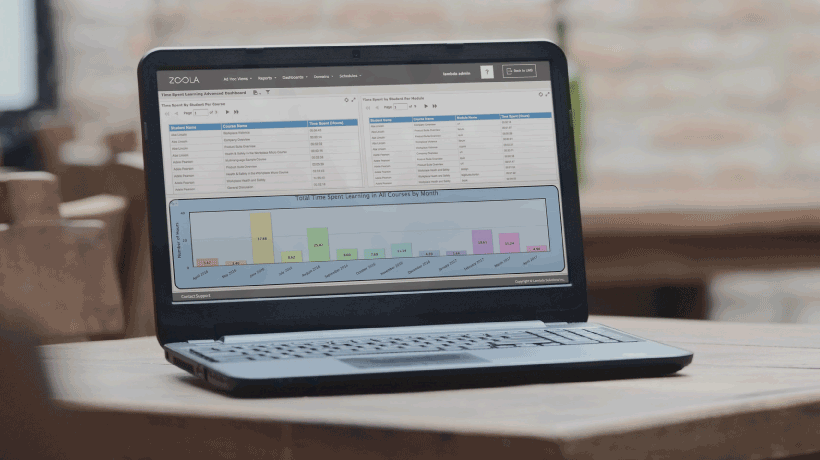The Way You Measure eLearning Performance Is Changing
Analyzing the performance of your eLearning will help show that the investment in eLearning is paying off. It’s your job to measure the metrics and interpret the results so you can find ways to improve the performance of your eLearning. Here is how you can measure eLearning performance using Kirkpatrick’s evaluation model.
Kirkpatrick's Training Evaluation Model
For over half a century, most learning professionals have measured training using Kirkpatrick’s four-level evaluation model:

In summary, the four levels are:
- Level 1 measures the reactions of learners: What did they think about the training?
- Level 2 measures learning: What was increase in knowledge or capability?
- Level 3 measures behavior: What was the extent of behavior and capability improvement?
- Level 4 measures results: What was the effect on the business?
In The Past...
Level 1 was easy to measure. You might be in a classroom or conduct face to face training where the use of a simple survey was a good way to gauge learners’ responses to the training program.
But at Level 2 and beyond, evaluation becomes complicated.
For years eLearning managers have tried to build evaluation into the eLearning process. Most without much success.
But in 2015 you are in luck. New eLearning tools are making it easier than ever to measure Level 2 and beyond.
Build Evaluation Into The eLearning Process
Organizations can now develop and manage their own eLearning using new eLearning authoring tools.
If you're moving your eLearning in-house, here are some ways to build evaluation into your eLearning roadmap.
Level 1: Reactions Of Students.
Modern authoring tools have inbuilt analytic tools that help you evaluate learners’ responses to eLearning. For example, you can use Elucidat to quickly create surveys into your design.
Use the feedback to evaluate Level 1:
- Track learners to find areas where you can improve the learning experience.
- Use this insight to quickly change and test different variations of your eLearning.
- Share learner tracking data with other software systems.
Here’s a quick project analysis screenshot taken inside Elucidat:

Level 2: Learning.
Use pre- and post-tests to evaluate what learners get out of your eLearning. For example, before you start training, create a pre-assessment survey that asks learners to assess their capabilities in relation to the eLearning topic you're about to teach (on a scale from 1–5).
This will provide benchmark data on how well learners think they know the content. After they’ve completed the eLearning, provide a post-assessment survey. Now you can compare the pre-assessment data with post-assessment data to determine if the training had a positive impact.
Level 3: Behavior Change.
Level 3 evaluates how much new knowledge or skills a learner has learned and then applied in their role or job. Some behavior change can be quantified. For example, if the training is for customer service, you can measure how many complaint calls are made before and after the training.
In other cases, where the behavior change is not easily quantifiable, you need to gather data through observation and analysis. The best way to do this is to have a supervisor or manager work closely with learners to assess their behavior and capabilities both before and after the training.
Level 4: Results/Effects On The Business.
Level 4 involves evaluating the extent to which the eLearning has contributed to your desired business outcomes. What you are measuring in this stage is the impact of the eLearning, rather than measuring learners’ performance. This takes time, as you won’t necessarily see benefits immediately.
If you have brought eLearning design and development in-house, you’ll be in a better position measure this performance metric. For example, you might be able to directly see the impact of the new sales training on the sales figures for the quarter.
Final Takeaway
As the role of learning inside organizations changes, so does the way you evaluate eLearning. With more and more pressure to demonstrate the positive impact eLearning is having on your business, it's important to use a tool that lets you measure key performance metrics (and Kirkpatrick's four levels).
Stay on top of the latest eLearning ideas, trends, and technologies by subscribing to the Elucidat weekly newsletter.









